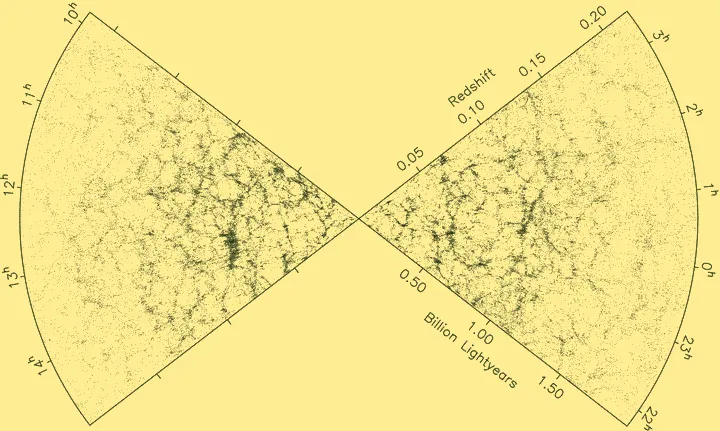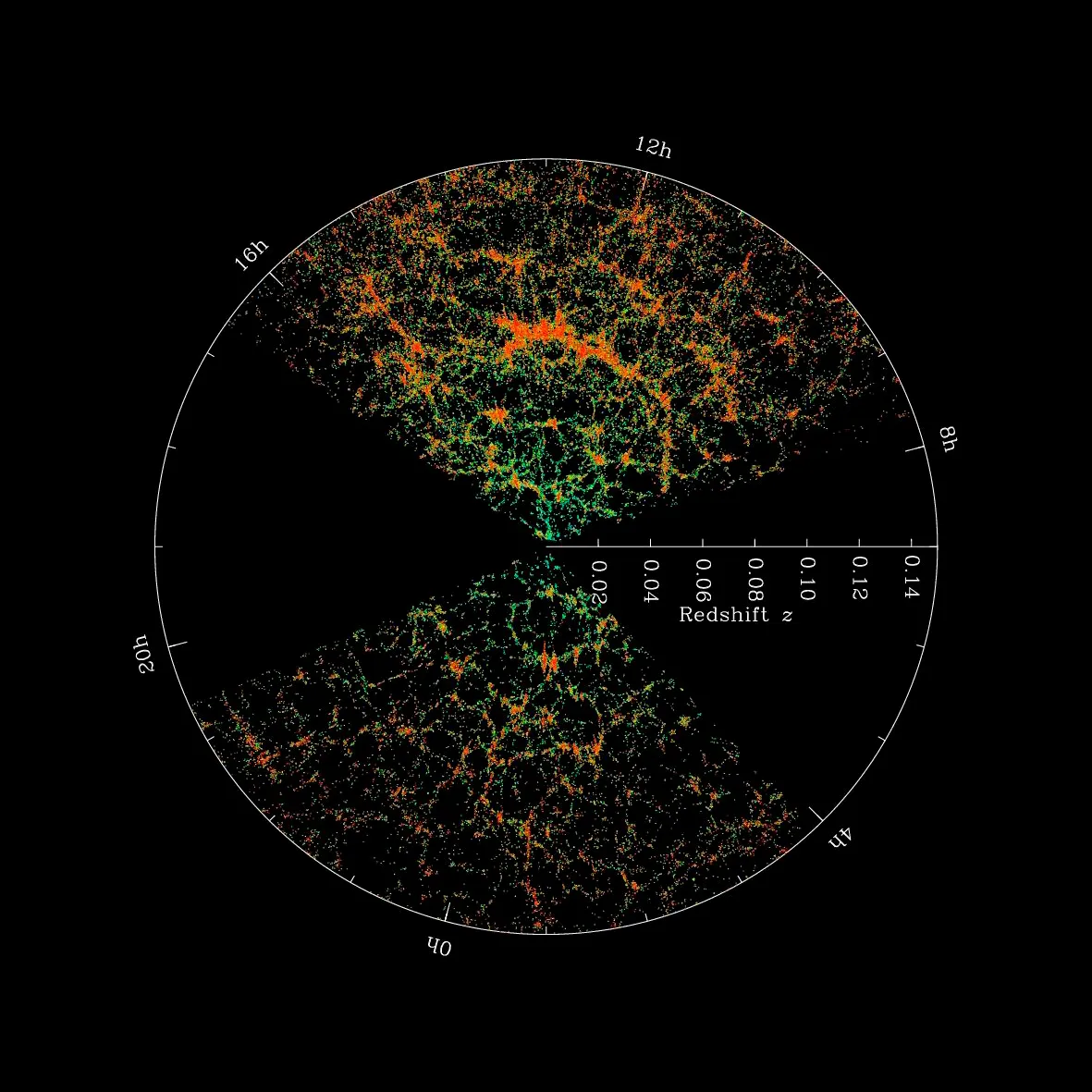The first three-dimensional map of the Universe, made with a 1.5-metre telescope at Mount Hopkins in Arizona, was published over 40 years ago, in 1982.
It took Marc Davis and his colleagues five years to determine the redshifts and corresponding distances of 2,400 galaxies, out to a distance of approximately 600 million lightyears.
A second redshift survey of the same wedge of sky, carried out between 1985 and 1995, mapped the 3D positions of no fewer than 18,000 galaxies.

Between 1997 and 2002, using multi-object spectroscopy at the 3.9-metre Anglo-Australian Telescope, a team led by Matthew Colless carried out the Two-Degree-Field (2dF) Galaxy Redshift Survey.
They determined the redshifts of 230,000 galaxies, out to a distance of some 2.5 billion lightyears.
The Sloan Digital Sky Survey, which started in 2000 and is still running, employs a dedicated 2.5-metre telescope in New Mexico.

So far, it has yielded over four million spectra of both stars and galaxies, out to distances of billions of lightyears.
Finally, the Dark Energy Spectroscopic Instrument (DESI) at the 4-metre Nicholas U Mayall Telescope at Kitt Peak Observatory in Arizona, which is very much complementary to ESA’s Euclid mission, is expected to complete its five-year redshift survey of 35–40 million galaxies in 2026.
This guide originally appeared in the July 2023 issue of BBC Sky at Night Magazine.

